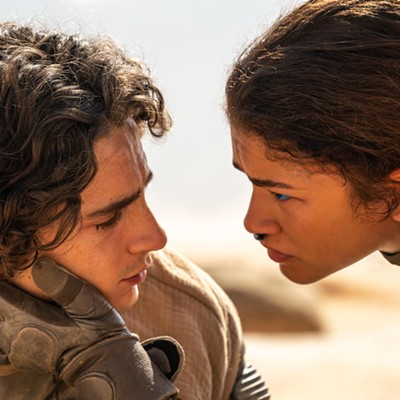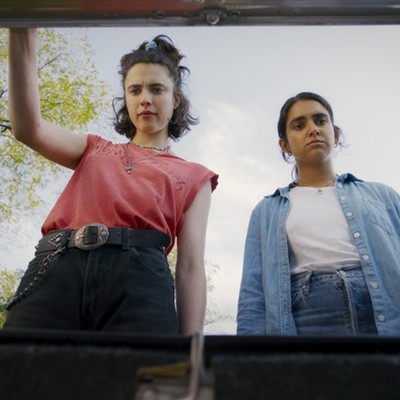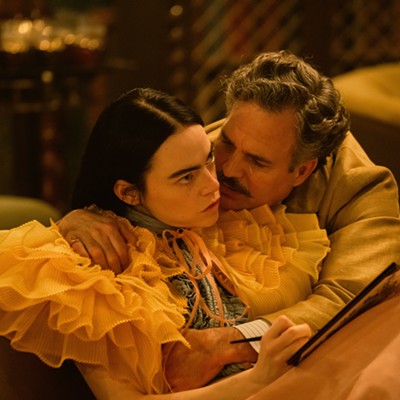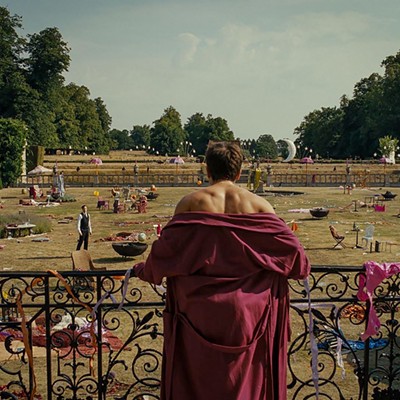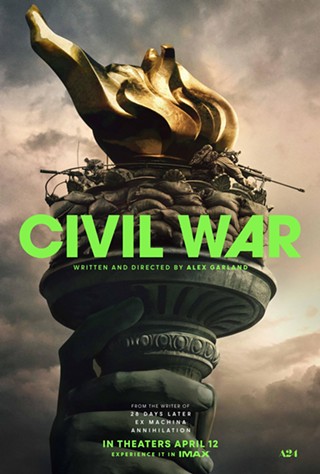With Paranoid Park, he continues with non-narrative expression, except here, he seems to be making a particular point about it: Paranoid Park actually has a plot, but only about 15 minutes worth of it. So it weaves back and forth, repeating whole scenes and skipping around in a way that makes the story seem to be merely a prop for the cinematography, music and emotive content.
The film covers and recovers a few key events, but spends most of its time outside the narrative, in long, tracking shots of skateboarders in skate parks, street scenes shot on video where random passers-by appear with their eyes blacked out, and an extended sequence in which a 12-year-old recounts highlights from Napoleon Dynamite.
Gabe Nevins plays the lead, Alex, a 16-year-old boy who always carries a skateboard, some ennui and an ambiguous sense of guilt. He's dating the prettiest cheerleader at school, of whom he says, "I wish I liked her more." His parents are breaking up, and one day at the railroad tracks, he's involved with something that might be murder.
All of the plot points are completely spelled out in the first 15 minutes of the film, and no major events occur after that, although everything that does happen is shown from multiple perspectives, and occasionally, a scene will be repeated exactly as it appeared earlier in the film.
What the story adds up to is a feeling of teenage distance from the world, a kind of hovering between reality and ideality that makes everything seem either numbingly mundane or painfully magical. Nevins perfectly captures this mood in his performance: He looks like his mouth has been wired shut by awe.
But the real stars are Van Sant and his cinematographers, Christopher Doyle and Kathy Li. Since this film looks so much like the last three films that Van Sant did with cinematographer Harris Savides, I might cautiously say that it's Van Sant who sets the visual tone.
That tone plays with an ambiguity between tension and quiet; it's like walking into the middle of a film and not being sure if this is the scene before the killer leaps out from behind the curtain, or it is merely a transitional sequence as characters go calmly from one place to the next. There are a few shots swiped from Psycho (a film Van Sant made a shot-for-shot remake of a few years ago) as if to say that the story, which feels so muted by the beauty of the film's style, is, at heart, horrifying.
And it is, but the movie presents everything as intensely beautiful. In one stunning sequence, Alex is being questioned by a police officer (Daniel Liu, whose naturalism and complex speech rhythms are award-worthy). The camera sits at one end of a long table, with Alex and the cop facing each other at the far end. Over the course of the conversation, it very slowly tracks forward, but instead of stopping in a close two-shot, it zooms even closer and just holds Alex's face, so that the detective is off-camera.
This is how a lot of the conversations are filmed: Only one person is seen, usually Alex, accentuating his alienation. It's as though his interlocutors vanish, or are merely sounds in his head.
And his head is full of amazing sounds. He narrates parts of the film, writing out the story of what happened as he sits on a bench surrounded by reeds. But even more compelling are the sounds that Van Sant chose. The soundtrack, unlike those of most skateboard movies, is not full of rock and noise. Instead, much of it is simply Nino Rota's famous score to the Fellini film Juliet of the Spirits--airy, mid-1960s movie jazz, offering a kind of breezy feeling, where different planes of reality bring airy delights.
Alex seems to have been pushed into this otherworld by the events occurring around him, and even when he takes action, it seems like things occur beyond his control. His first sexual encounter mostly involves him lying on his back and watching, almost from a distance, as his girlfriend has sex with him. Immediately afterward, she jumps up to phone her friend; whether on him or off of him, she seems equally disconnected from the world where Alex lives.
In this swirl of unimportant first sex, yellow autumn leaves, light filtering through and around the legs of skateboarders, a dead man and music that seems to have grafted itself onto this film after falling off another one, Van Sant captures the complexity and mood of an interior life that's barely begun to realize it exists. It's not his most powerful film, and it's a much less ambitious project than his last three--but as a small work about some of the possibilities unexplored in filmmaking, it presents with hypnotic beauty the passing quality of painful self-awareness.

